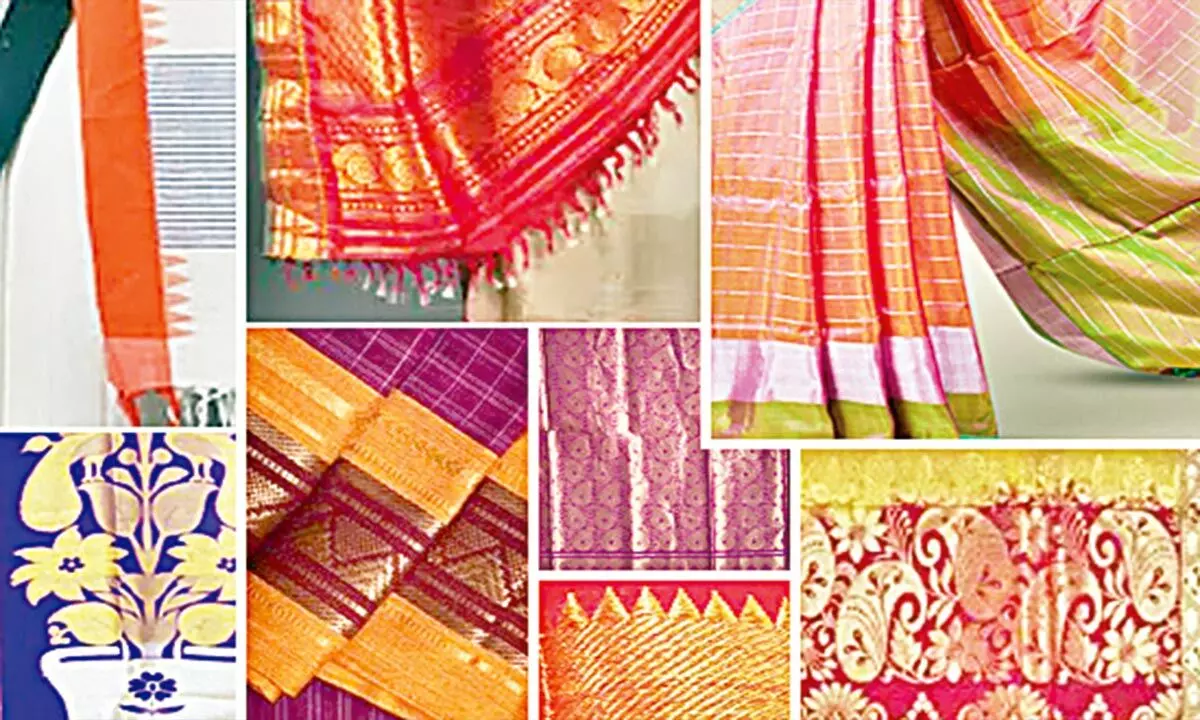Connecting consumers with culture can give new lease of life to India's traditional textiles
Traditional products should not merely be seen as products, they are the heritage that has the strength to create same kind of revolution like Charkha, Khadi and Tiranga did
image for illustrative purpose

In South India, during various commercial events, leading personalities can be seen in their traditional attires, while this is almost missing in other parts of India. So having 'connect', proud with not only own state, own culture, but India's products, nation's culture need to incorporate in every human being
Har Ghar Tiranga campaign proved a highly successful initiative and one can easily feel the 'connect' with tricolour and love for the nation, respect to our freedom fighters for their contribution. Workers who manufactured these million of tricolours, also had a spirit, proud while making these tricolours. With this, generation Z can realize how almost a century ago the father of our nation created a revolution with the concept of Charkha and Khadi.
So the basic idea is to feel 'connect' and realize that in a particular task, you are doing something good, for your nation, for your values and belief.
The same 'connect' is needed to create in India's traditional textile products be it Gamcha, Dhoti or other such products which may be lesser known out of their region. Concepts like textile tourism, geographical indication (GI), and one district one product (ODOP) do have the power to become a revolution that can bring a massive change in the demand for such products and improve the textile business.
But massive efforts are also required for the same and the biggest effort will be to connect the masses and especially generation Z which is the biggest consumer of clothes, have more buying power, they believe in the experiment, they doesn't do only need-based shopping and most importantly, this generation is tech savvy to explore newer products. And if we can do this for India, social media platforms like Instagarm which is also now a leading shopping platform, can spread these efforts across the globe.
And supreme influencers like top leadership, and celebrities can do this as their contribution to society. And it will not only increase the demand for traditional products and benefit the textile industry, but it will also connect them to their roots and will help them to be more familiar with the different cultures of our beautiful nation. Indeed it can strengthen the social fabric of our society. In South India, during various commercial events, leading personalities can be seen in their traditional attires, while this is almost missing in other parts of India. So having 'connect', proud with not only own state, own culture but India's products, nation's culture need to incorporate in every human being.
There is already strong groundwork there as across India, there are craft villages located at Raghurajpur (Odisha), Naini (Uttar Pradesh), Anegundi (Karnataka), Mahabalipuram (Tamil Nadu), Taj Ganj (Uttar Pradesh), Ajmer (Rajasthan) Tirupati (Andhra Pradesh) and Vadaj (Gujarat). These villages have been taken under the 'linking textile with tourism' programme, benefitting around 1,000 artisans to promote craft and tourism at a single location.
These are just a few examples, there are many more products in our interior and they all have the qualities to be used as daily wear or at least get reasonable space in our wardrobe. But as usual, efforts need to go beyond the routine government schemes and traditions like handloom or khadi on just some special occasions.
Lakh of Indians proudly buy various expansive textile, and leather products of foreign luxury brands so buying real pashmina or real product which is no less than any world-class product be it product's feel, best quality and usability. Branding is not going to promote much to such Indian products so the missing factor is the 'connect' that they should feel while buying India's traditional strengths. There should be an ecosystem where anyone easily ensures that he or she is buying a genuine product.
And this 'connect' will not develop overnight and steps requires for the same at different levels. For example, our schools often have fancy dress completion for kids and ask kids to wear special dresses at festivals. The major object behind this is fun and kids' overall development. This needs to extend in true spirit and beyond kids. There can be regular events to promote traditional garments and even handicraft products. Students of senior classes should realise India's culture and hard work behind these products. The idea should that in long run these students should not only use such products proudly but also become brand ambassadors for these products.
In this era of disruption, when marketing and sales initiatives have constantly new strategies, new efforts and interesting ways to encash every possible opportunity, to create opportunity, our traditional product should not only be seen as just products, it is a heritage that has the strength to create a kind of revolution like Charkha and Khadi, Har Ghar Tiranga campaign did. Marketing Gurus can connect consumers and culture.
(The author owns a garment manufacturing setup in a rural area, which employs mostly women workers)

